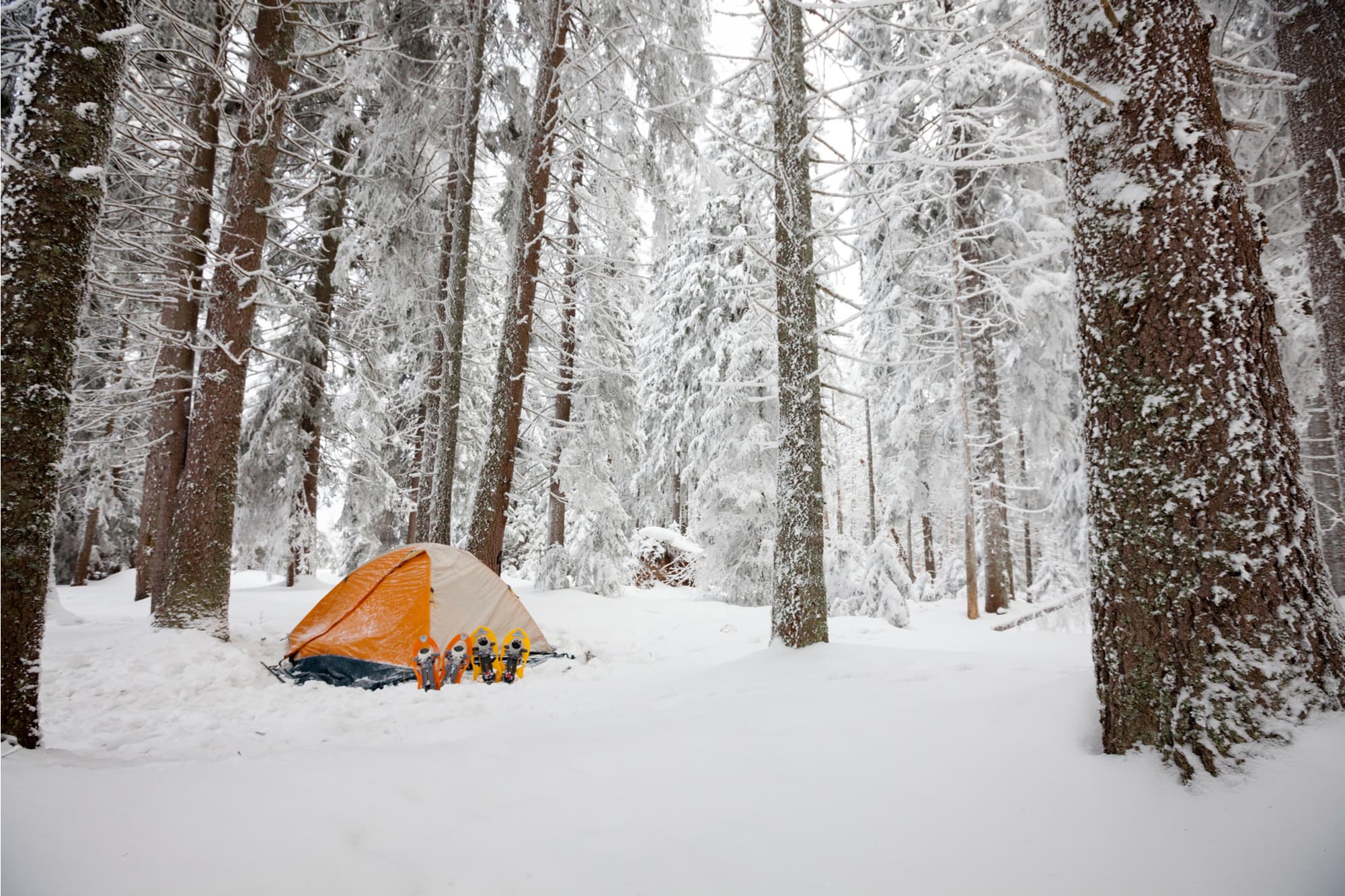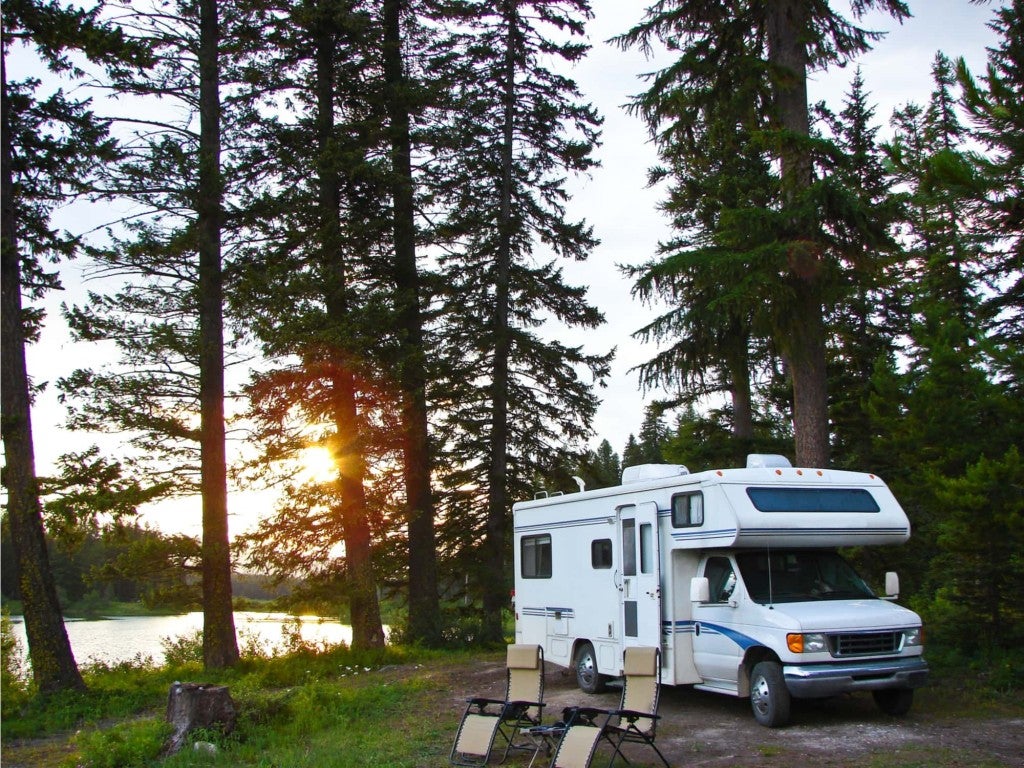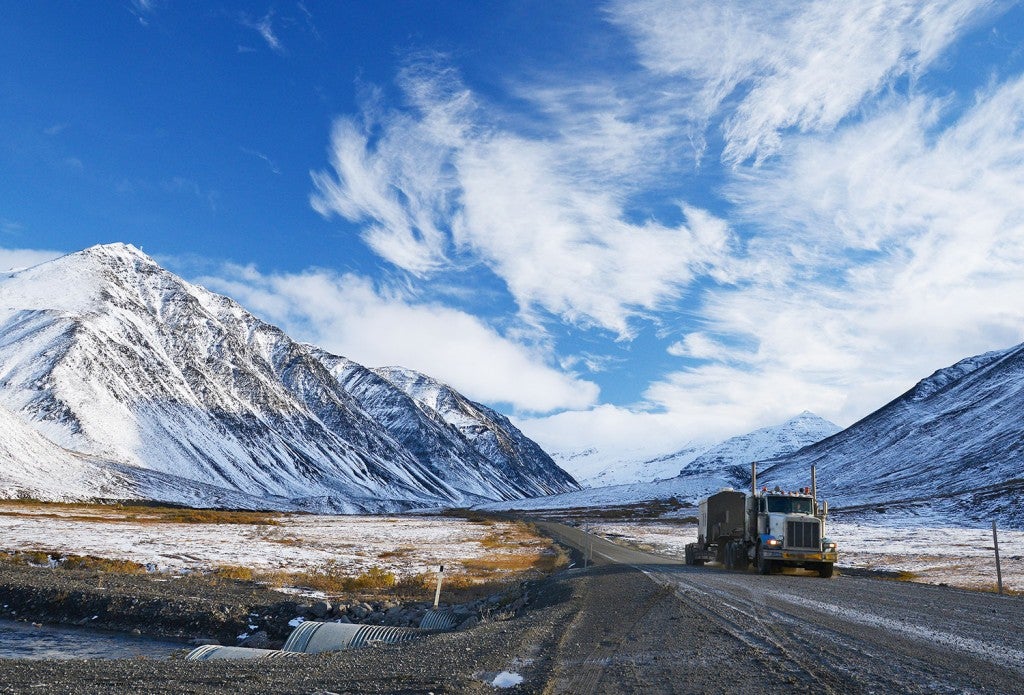Wisconsin borders three of the most famous waterways in America; Lake Michigan, Lake Superior, and the Mississippi River. While this is a big draw to the state, and a defining element of their history and culture, the massive forests and inland lakes often get overlooked. When winter camping in Wisconsin, it’s these elements that truly come to life.
The snow falls, the crowds leave, and Wisconsin’s backcountry becomes your playground. In addition to some of the best backcountry winter camping in the region, there’s also plenty to do for families and leisure seeking travelers. Winter camping in Wisconsin allows you to skip the crowds, and experience this large and versatile state in a whole new way.
But yes, you’ll have to brave the cold.
Go Camping in Wisconsin this Winter for the Ultimate Adventure
Imagine 1.5 million acres of national forest to explore, just outside the zipper of your tent. Picture wide-open, frozen lakes to ice fish, or for opening up the throttle on your snowmobile. The key factor is to be prepared. Wisconsin is cold. The open plains to the west and massive Great Lakes to the east create weather patterns that give “patterns” a bad name. The unpredictability means you need to be ready for the worst.
For the tent campers who are winter camping in Wisconsin, that means mummy bags rated for well below freezing temperatures, four-season tents, and a portable heat source. For RV enthusiasts winter camping in Wisconsin, you need to think about backup batteries, snow tires, and stocking up on groceries for the family. Also, remember that many campgrounds do not have their water or electrical hookups available in the winter.
That being said, winter campers in Wisconsin will find a whole new world of frozen landscapes and winter activities, if they’re willing to brave—and embrace—the elements.
Exciting Winter Activities for Wisconsin Campers
Winter activities in Wisconsin range from comfortable to extreme. You can set out on a trail that goes for days, or take the kids for a safe thrill ride they’ll never forget. You can embrace the elements and stay outside, or find a heated reprieve from your chilly campground.
The scenery as your backdrop in Wisconsin can vary greatly. Some snowshoe hikes end with spectacular high views of the countryside. Ice caves and magnificent rock faces can be seen if you dare cross-country ski across a frozen Great Lake. Whatever style of outdoor activity you prefer, the winter will offer something new.
1. Skijoring (Ski with your dog!)
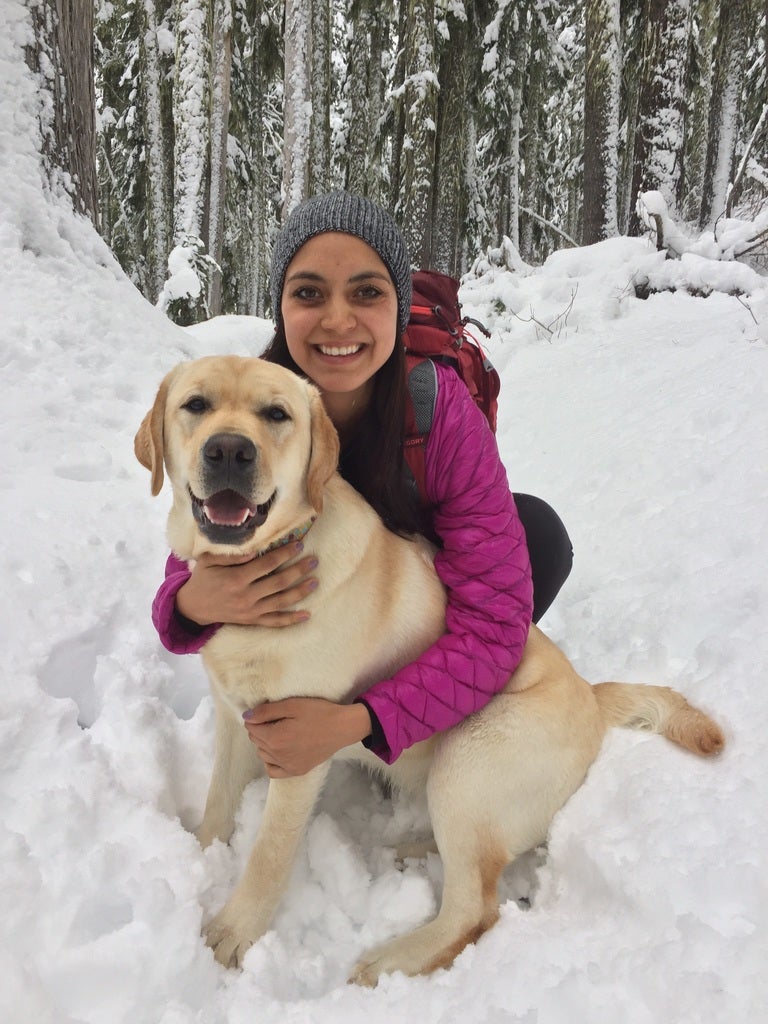
Image from The Dyrt camper Sasha W.
The Norwegian word “skijoring” basically means “ski driving.” The sport is a blend of cross-country skiing and dog sledding. Quite simply, your dog pulls you on your skis. Skijoring can also involve horses, for the more advanced.
Sounds fun, right? But where can you do this thing without completely annoying snowshoers and other cross-country skiers just out there trying to be normal? You can find a 5-mile trail for skijoring at Chase’s Point—part of the Superior Municipal Forest. While it’s shared with snowmobiles and ATVs, it is known to be used for skijoring, and therefore most travelers understand what’s going on.
You can also go skijoring on the Elroy-Sparta State Trail, one of the first rails-to-trails conversions in the country.
2. Ride the Snow Train
There are several “snow trains” throughout the mitten state, offering bundled up riders a chance to warm up with a blast from the past. Vintage and modern trains take scenic trips through snow-covered landscapes.
The Mid-Continent Railway Snow Train in North Freedom chugs through beautiful Sauk County. It’s a classic, cozy, and comfortable way to see Wisconsin’s countryside. The train ride is a seven-mile, 55-minute round-trip on a former branch line of the Chicago & North Western Railway. The train cars are kept warm with traditional steam heating and coal-burning stoves. It’s complete with an authentic conductor shouting “All aboard!”
3. Ice Fishing Lake Winnebago
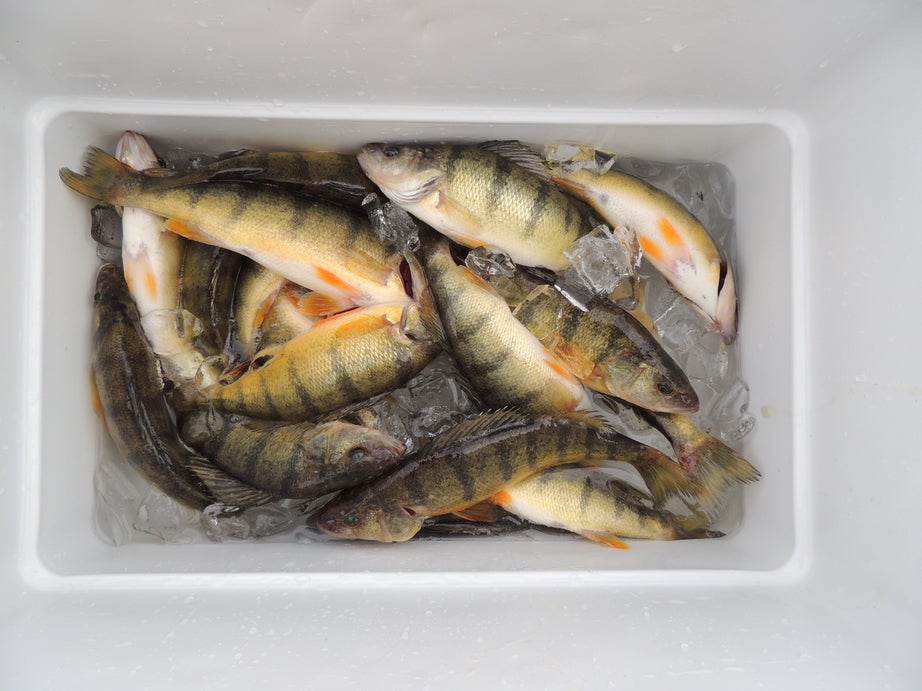
Image from The Dyrt camper Ed E.
Lake Winnebago is the largest inland lake in Wisconsin. If ice fishing is a goal while you’re winter camping in Wisconsin, Lake Winnebago is one of the best destinations in the region. It’s home to popular species like walleye, perch, white bass, and even sturgeon. The self-sustaining lake sturgeon population is rated as one of the best in the entire country. In 2004, a lake Sturgeon weighing 188 pounds was pulled from Lake Winnebago during the traditional spearing season!
This is a very large inland lake and therefore can have varying ice conditions. If you’re looking for a particular species, you will need to know the fishing quadrants of the lake. For more information on ice fishing Lake Winnebago, check out this site for advice.
4. Snow Tubing at the World’s Largest Tubing Park
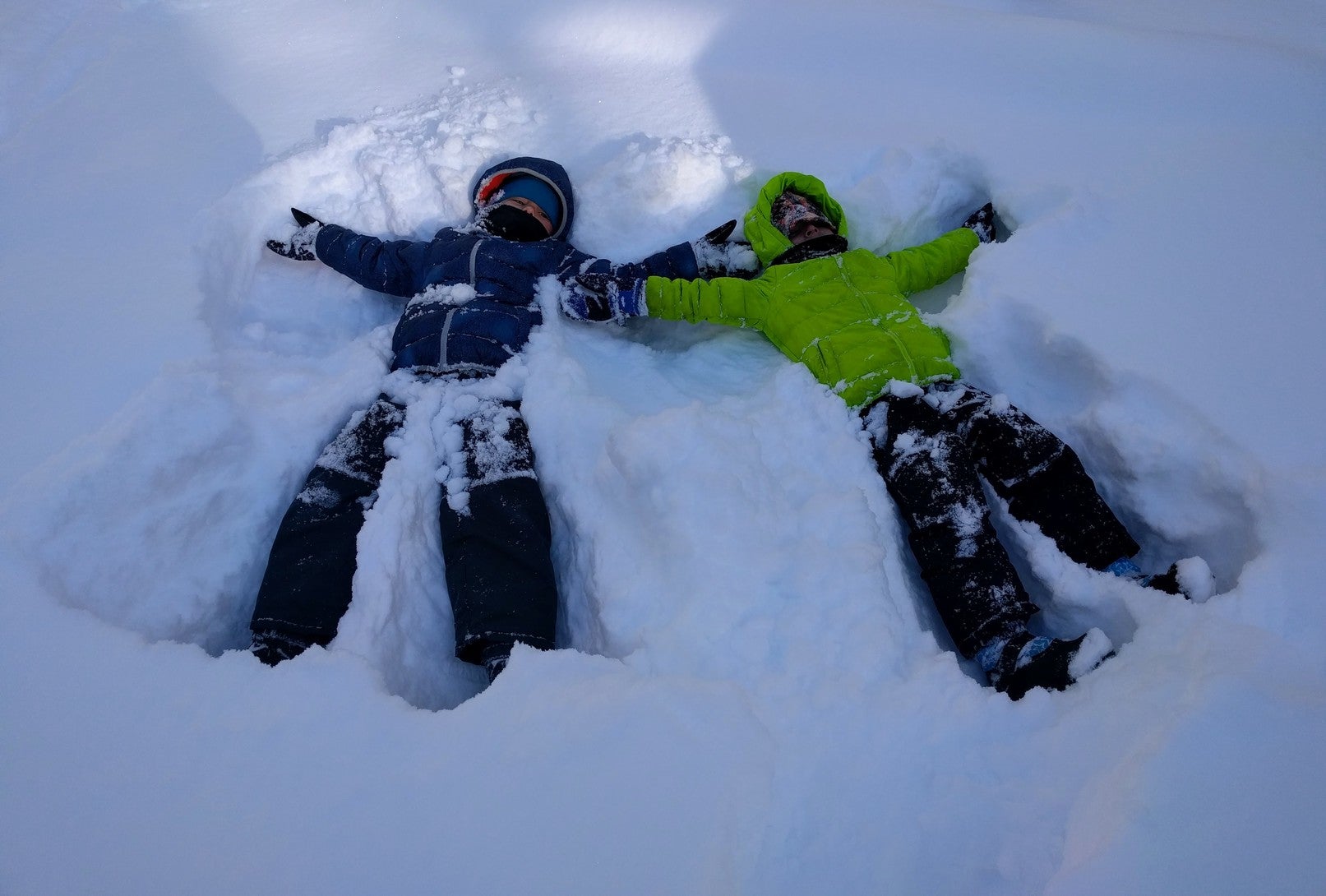
Image from The Dyrt camper Basia M.
Remember the joy of sailing down fresh powder in your dinky saucer sled? Snow tubing is so much better. And Wisconsin happens to be home to some first-class tubing.
Sunburst Tubing Park is the largest tubing park in the world, and one of the top snow tubing destinations in the U.S.A. As a bonus, it’s only about 45 minutes from Milwaukee. For people winter camping in Wisconsin, it’s the perfect family activity to get the kids moving. For those who want more thrills for less work, it’s the perfect day of fun in the snow. More importantly, it brings the kid out in every adult.
In addition to Sunburst, Cascade Mountain in Portage has a 900-foot chute that’s pretty awesome, plus a magic carpet ride back to the top.
5. Zipline Through the Snow at Wisconsin Dells
Did you know ziplining in the snow was a thing? Do you love that scene from Home Alone when he ziplines to his tree fort to escape the burglars? Well, this is your chance to live that scene. Bigfoot Zipline Tours is open during the winter, and it’s located in the Wisconsin Dells. When you’re planning a winter camping trip to Wisconsin and you want to visit the Dells, fewer crowds is a major bonus.
6. Throw the Stone at the Milwaukee Curling Club
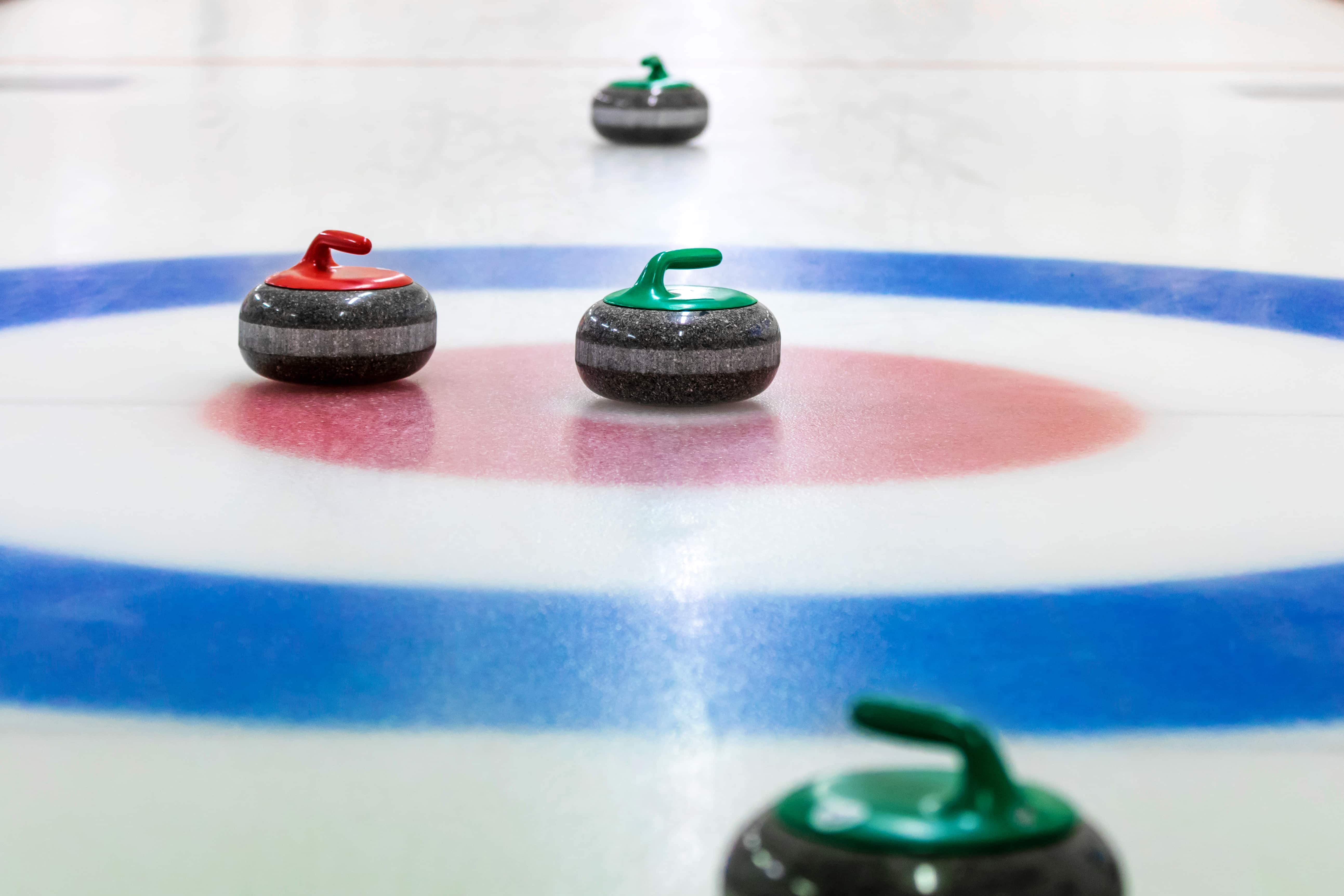
Image from Shutterstock
Curling is not just reserved for the select few Olympic athletes you see every four years on TV. It’s actually a fun sport to play, and with some practice, can get pretty addictive. If you like darts, shuffleboard, horseshoes, cornhole (bags), shouting, or falling down a lot, curling might be for you! The Milwaukee Curling Club is an excellent place to give it a go when winter camping in Wisconsin.
7. Hike Winter Trails in Wisconsin
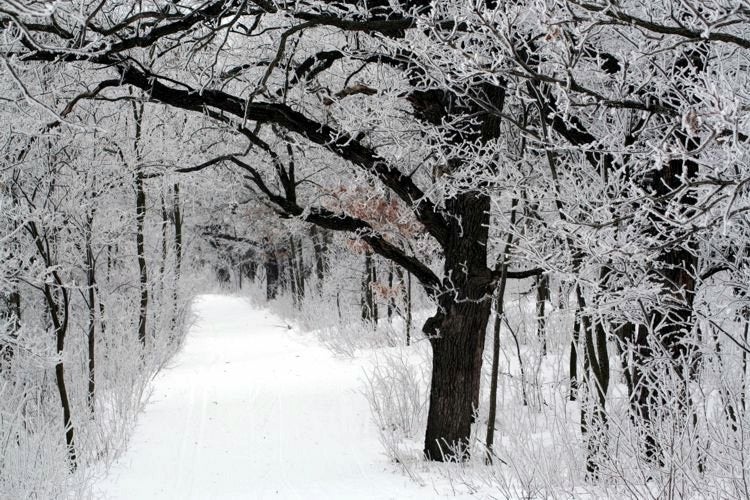
Image by The Dyrt camper Ash V.
Beyond all the unique activities available, you can’t go wrong with the classics when winter camping in Wisconsin. With hundreds of miles of trails throughout large national forests and state parks, there’s always a trail for you. Whether it’s snowmobiling, cross-country skiing, snowshoeing, or fat tire biking, chances are there’s a trail for that. Plus, it’s likely minutes or mere steps from your campsite.
Kettle Moraine State Forest has an extensive winter trail system. In the northern unit, the Greenbush Recreation Area has trails for hikers, skiers, and snowshoers. There are lighted ski trails and a heated picnic area. Here you can also access the massive Ice Age Trail that goes across the state. In the south unit of Kettle Moraine, the trails to Lapham Peak lead to an elevated tower with a view of the whole area. Plus, you’ll find 60 miles of snowmobile trails throughout the state forest.
7 of the Best Winter Camping Destinations in Wisconsin
You might be surprised to find that lots of campgrounds are open during the winter in Wisconsin. Bonus: You almost definitely won’t need a reservation. Whether you want backcountry seclusion or classic RV camping with convenience, there is an array of options for embracing the season.
1. Chequamegon-Nicolet National Forest
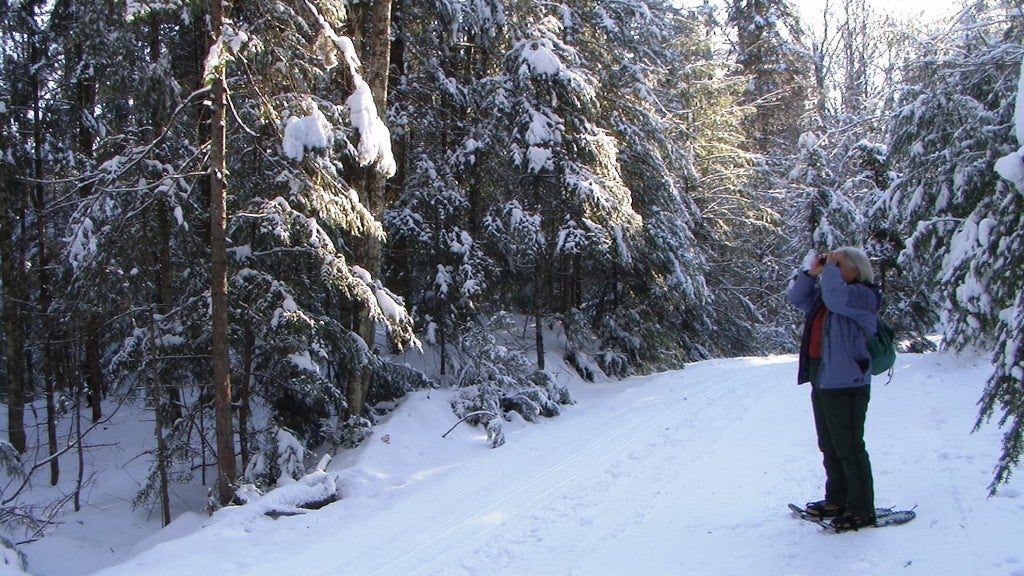
Image from the U.S. Forest Service
There is a lot of national forest in Wisconsin where you can park the car, walk in, find the perfect spot, and set up camp. The Chequamegon-Nicolet National Forest includes about 1.5 million acres stretching across a dozen northern Wisconsin counties. Plus, the area has two national scenic trails slicing through the forest; the North Country and the Ice Age.
In the Chequamegon-Nicolet National Forest, camping is permitted anywhere at least 100 yards off the trails and away from sources of water. That includes lakes, streams, and ponds. Beyond that, the 1.5 millions acres of land is all yours to explore, and to make your campground. In the winter, you will truly feel like the Wisconsin wilderness is all yours to explore. (It’s not really, of course. So be sure to treat it right so other campers can also enjoy that serene, white landscape.)
“Beautiful lake and a true northwoods experience. Most sites are lake front with steps leading right down to your own private beach!” —The Dyrt camper Ashley Y.
2. Blue Mound State Park
In the southern region of Wisconsin, Blue Mound State Park is all about the long view. One of the best things to do here is to cross-country ski on the trails, and then find the observation towers.
The towers are on top of the highest elevation in the southern region. You’ll get spectacular views of the Wisconsin River valley and Baraboo Range to the north. The young glacial plains and the city of Madison can be seen to the east. Plus, the mounds, buttes, and rolling forests of the Driftless Area fill out the view to the south and west.
Winter camping at Blue Mound State Park is walk or ski in only. There are a several sites open year round. Plus, firewood and tap water is available. You can park at the campground entrance, but you cannot bring your vehicle to the campsite.
“Easily accessible, very clean and well-maintained campground and park. Many sites to choose from for tents. The trails are well marked and appeal to hikers, mountain biking, and winter sports.” —The Dyrt camper Heather M.
3. Kohler-Andrae State Park
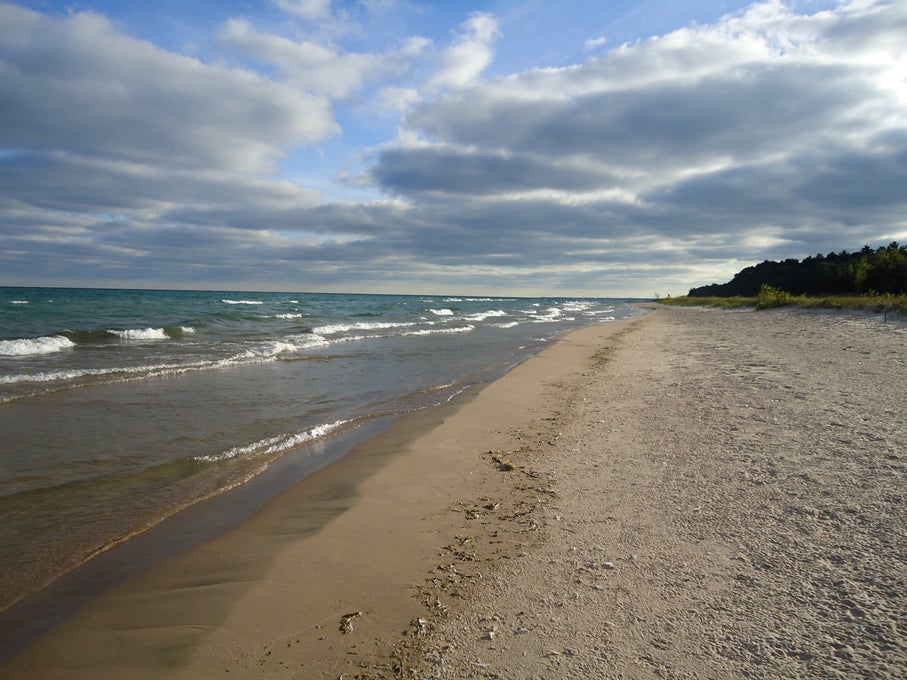
Image from The Dyrt camper Julie L.
There’s nothing quite like the Lake Michigan shoreline in the winter. Windswept snowy sand dunes, crashing waves, and icy sculptures at water’s edge. The Kohler-Andrae State Park contains over two miles of beaches and sand dunes along the shore of Lake Michigan. In addition, the woods and wetlands away from the water are magnificent natural areas to explore. The Black River flows through the parks and can be beautiful with freshly fallen snow.
In the winter, there are several options for campers at Kohler-Andrae State Park. Family Campsites 3, 7, 8, 15, 17, 18, 19, 22, 24 and 28 are open and snow plowed for access. Plus, group sites A & B are open for winter camping.
“Gorgeous place to camp! everything was beautiful, this park has it all… spacious campsites, sand dunes, trails, beach, gorgeous sunsets! plenty to do! there is a large open area and play area for kids to run around walkable from the camping, lots of little paths to explore! we loved our time here and can’t wait to go back!” —The Dyrt camper Kendra G.
4. Kettle Moraine State Forest
The Kettle Moraine is a highly glaciated area with striking geological features. It features very hilly terrain with glacial landforms like kettles, kames, and eskers. The forest includes 250 miles of hiking trails that can be used for snowshoeing and almost 100 miles of cross-country ski trails. Plus, you’ll find 150 miles of snowmobile trails and 75 miles of off-road bicycle trails including 30 miles of single-track trail. For the bike trails, always check if the conditions are ok for fat tire biking in the winter.
The Kettle Moraine State Forest has numerous campground and backcountry options in the winter, with some three-sided Adirondack-style shelters offering protection from the wind. There are also five reservable backpack shelters along the Ice Age Trail in its northern unit, and three in its southern unit. The campgrounds at Mauthe Lake and Ottawa Lake both stay open and plow a handful of sites in the winter if you want to be able to pull your car up to the site.
Sunburst tubing park is just five minutes from the Kettle Moraine State Forest. So bring the family for winter camping, then send it on the tube! Milwaukee is also only 45 minutes from the state forest. You can take a trip into town for some curling! Or, you know, lots of other things.
“The facilities were still under their winter setup (only vault toilet, no shower available, pay in an envelope). The sites look to have enough space between them to make you feel a little more spread out and not sitting on top of each other. The proximity to the Ice Age Trail is a bonus, because it made for an easy activity without much fuss.” —The Dyrt camper Robert K.
5. Peninsula State Park
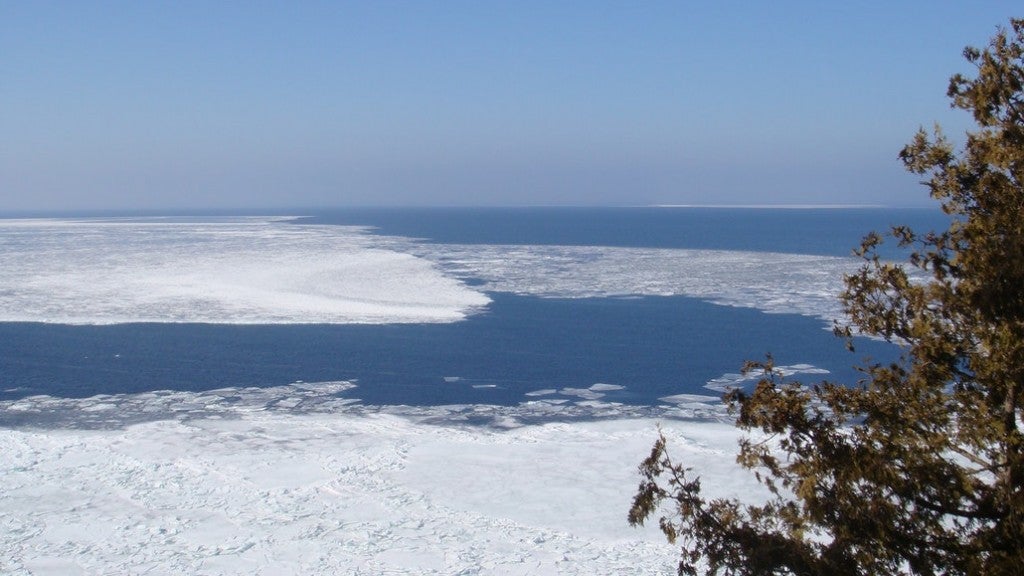
Image from The Dyrt camper Jay W.
Door County is one of Wisconsin’s most popular destinations and Peninsula State Park is one of the region’s most visited camping areas. The park usually sees all of its 600-plus campsites fill up in the summer. Come winter, the park might have only a dozen or so winter campers, both in tents and travel trailers. They come for snowshoeing, cross-country skiing, wildlife viewing and the sledding hill. Plus, spectacular wintery waterside views of Green Bay.
A portion of Tennison Bay Campground at Peninsula State Park remains open for winter camping. There are decent services still available in the winter, including electrical hookups, freshwater, and vault toilets. This a great example of winter camping in Wisconsin, allowing you to experience a premier destination in the region without the crowds.
“I loved that the whole park was heavily forested and there was plenty of privacy…The cost with the entrance fee was a little high for us, but the park’s proximity to all the other attractions of Door County made it worthwhile for us.” —The Dyrt camper Jodie B.
6. Governor Dodge State Park
Not far from the Wisconsin Dells in the Driftless Region, Governor Dodge State Park has a cool option for thrill seekers on a winter camping adventure. When Stephen’s Falls freezes, ice climbers make their way up the frozen cascade. So if you’re up for that, or just interested in great winter trails and day trips to Wisconsin Dells and Madison, this is your place.
Over 30 campsites in the Twin Valley Campground at Governor Dodge State Park are available for winter campers. Some are plowed, plus electricity, pit toilets, picnic tables, and fire rings are available. Water is also available at the park office.
“So many great hiking trails with cliffs, bluffs, caves, waterfalls, and old architecture that displays the great history of the area. We recommend a little shop right down the road for firewood. One of our go-to nature escapes!” —The Dyrt camper Elliot Q.
7. Apostle Islands National Lakeshore
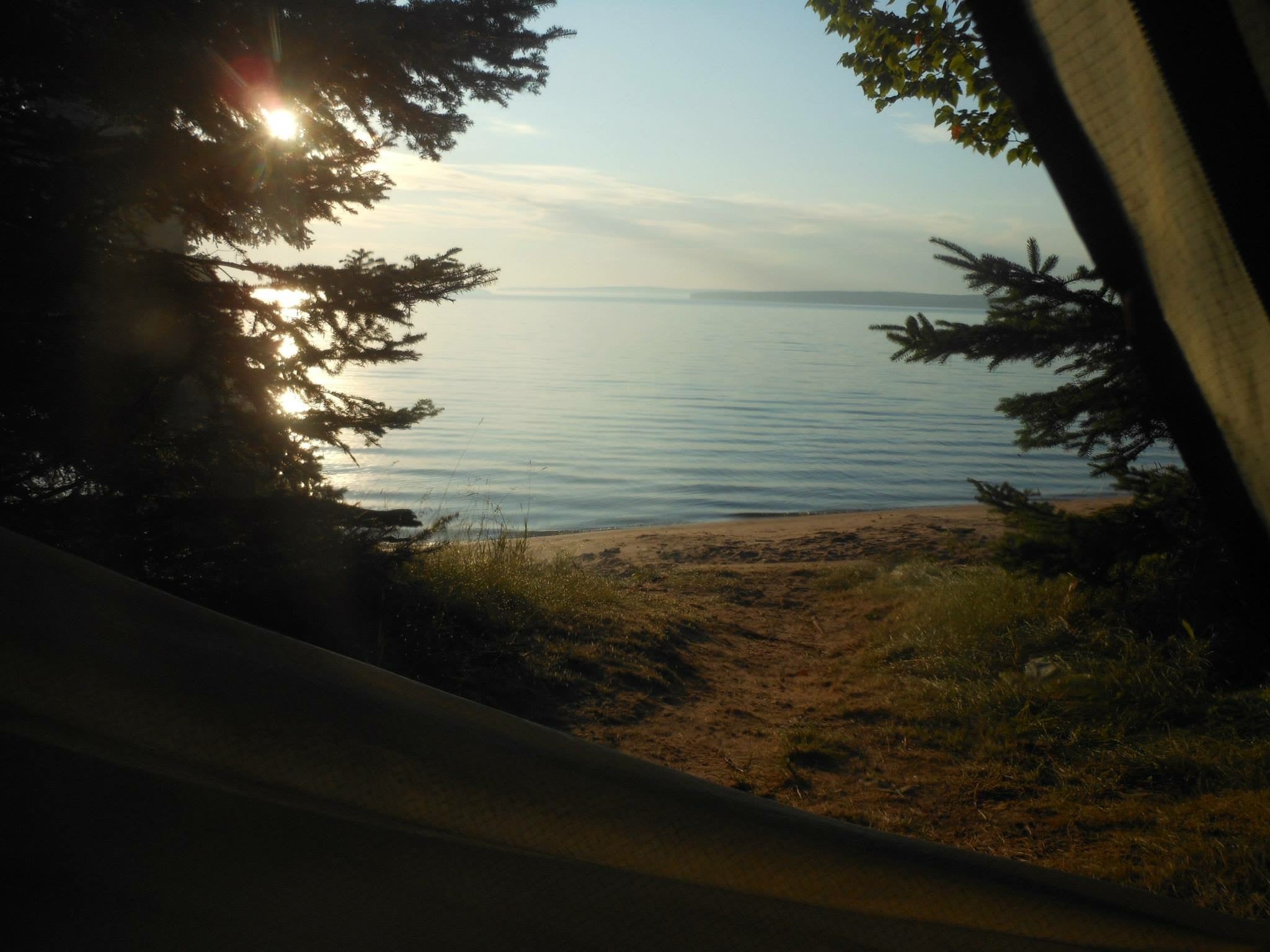
Image by The Dyrt camper Haley C.
Winter camping on an island in Lake Superior? Well, if you’re willing and well-prepared, this is a camping experience you’ll never forget. If and when the lake freezes between the mainland and the island chain, you can cross-country ski to one of the Apostle Islands National Lakeshore’s 21 islands. The trip across is about a mile or two, depending on which island you choose and where you set off.
There are primitive sites on 19 of the 21 islands that make up the Apostle Islands National Lakeshore. For for the most extreme winter camping in Wisconsin experience, ski out to the islands and explore the rock caves and ice caves on the shoreline. For this excursion, take caution, do your research, and speak with locals about best practices. Permits are required for all camping.
“This place is absolutely beautiful. The camping areas seemed clean and well taken care of, we were in a site without trash cans, so we made sure to ‘pack in, pack out.’ This place had so many beautiful rock structures along the lake, and it is fun to bring the canoe or kayak during the summer months, but also adventure around during the winter months as well to see the ice buildup on the cliffs and rocks!” —The Dyrt camper Jill R.
For important information on winter camping and safety check out the Apostle Islands National Lakeshore website.
Related Campgrounds:
- Crazy Horse Campground, Brodhead, WI
- Devils Lake Wisconsin Camping, Devils Lake, WI
- Timberland Campground, Lyndon Station, WI
- Grand Valley Campground, Kingston, WI
- KOA Campgrounds in Wisconsin, Wisconsin Dells, WI
- Vista Royalle Campground, Bancroft, WI
- Mirror Lake Camping, Baraboo, WI
- High Cliff State Park, Sherwood, WI
Popular Articles:
Articles on The Dyrt Magazine may contain links to affiliate websites. The Dyrt receives an affiliate commission for any purchases made by using such links at no additional cost to you the consumer.

